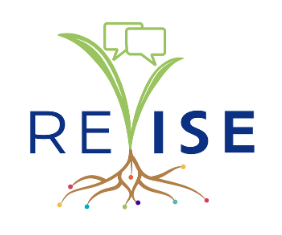September 15th, 2024 - August 31st, 2027 | PROJECT
The need for ultrathin (thickness in sub-2 nm) oxide semiconductor films with tunable electronic structures and functionalities arises from the steady trend of reducing device dimensions in electronics for advanced computing and artificial intelligence following the empirical Moore's law during the past few decades. New energy-efficient computing paradigms have emerged, such as neuromorphic computing (NC), which is inspired by how brains work. This paradigm aims to address the von Neumann bottleneck, taking advantage of the computing strength of a neural system, namely pattern recognition and unstructured data sorting. The challenge for ultrathin oxide semiconductor films and their applications in devices and circuits is the lack of understanding and control of the physical and chemical properties of the materials when approaching atomic scales, when defects within those films and at their interfaces become increasingly important. Memristors, regarded as the fourth fundamental circuit element next to resistor, capacitor, and inductor, consist of a thin oxide semiconductor film sandwiched between a pair of electrodes. The operations of both memory storage and low-power computing are integrated in memristors. The ability to control at the atomic scale the memristive resistance, switching speed, power efficiency, scalability, and stability among other performance criteria, presents a major challenge to future NC circuits. The proposed research will address this challenge through the development of a co-design approach for design, synthesis, and characterization of sub-2 nm wide-bandgap semiconductor memristors and prototype NC circuits with atomically tunable physical properties and functionalities. The success of the project can have a broader impact on a large spectrum of commercial applications including neuromorphic and quantum computing, artificial intelligence, quantum information science, CMOS, etc. This project emphasizes forefront STEM workforce training through a set of education and outreach activities towards producing a unique and diverse workforce for the future semiconductor industry. This award is cofunded by Advancing Informal STEM Learning program.
Atomically tunable memristors based on ultrathin (sub-2 nm) wide bandgap semiconductors, such as Ga2O3, with their electronic structure and the oxygen vacancy (VO) concentration, distribution, and diffusion controlled with atomic precision, are key to future NC circuits of high performance, scalability, stability, and energy efficiency, which present major challenges to current NC technologies. To address those challenges, the research team has recently developed a simulation-guided design and fabrication approach for an atomic layer stack (ALS) of sub-2 nm memristors using a state-of-the-art custom-designed/built in vacuo atomic layer deposition (iALD) system. Using this capability, atomically controlled bandgap tuning and VO doping of pristine wide-bandgap Ga2O3-ALS has been demonstrated by insertion of Al2O3 and MgO atomic layers of different numbers and stacking sequences. This has led to the successful atomic tuning of Ga2O3-ALS memristors' physical properties including the on/off ratio of 10-40000 and switching speed from microsecond to nanosecond. The proposed co-design approach for fabrication, characterization and testing of sub-2 nm wide-bandgap semiconductor ALS memristors and prototype memristor-based NC circuits has three aims. Aim 1 focuses on simulation-guided design and synthesis of Ga2O3-ALS memristors. Aim 2 investigates memristor structure-property relationship using various advanced tools for a thorough understanding and full control of the ALS design parameters towards atomically tunable memristors to enable brain-inspired NC with high energy efficiency, switching speed, stability, and scalability. Aim 3 explores the prototypes of NC circuits based on the tunable memristors. New fundamental understanding of sub-2 nm wide-bandgap semiconductor Ga2O3-ALS is crucial to achieving atomically tunable memristors for future electronics and computing. A transformative leap in novel co-design approaches of sub-2 nm ALS enables new functionalities for future electronics.
Project Website(s)
(no project website provided)
Team Members
Judy Wu, Principal Investigator, University of Kansas Center for Research IncHartwin Peelaers, Co-Principal Investigator, University of Kansas Center for Research Inc
Francisco Robles-Hernandez, Co-Principal Investigator, University of Houston
Heather Domjan, Co-Principal Investigator, University of Houston
Funders
Funding Source: NSF
Funding Program: FuSe-Future of Semiconductors, Advancing Informal STEM Learning (AISL)
Award Number: 2425549
Funding Amount: $1,073,480.00
Tags
Audience: Scientists
Discipline: General STEM | Materials science | Physics | Technology
Resource Type: Project Descriptions | Projects
Environment Type: Informal | Formal Connections
